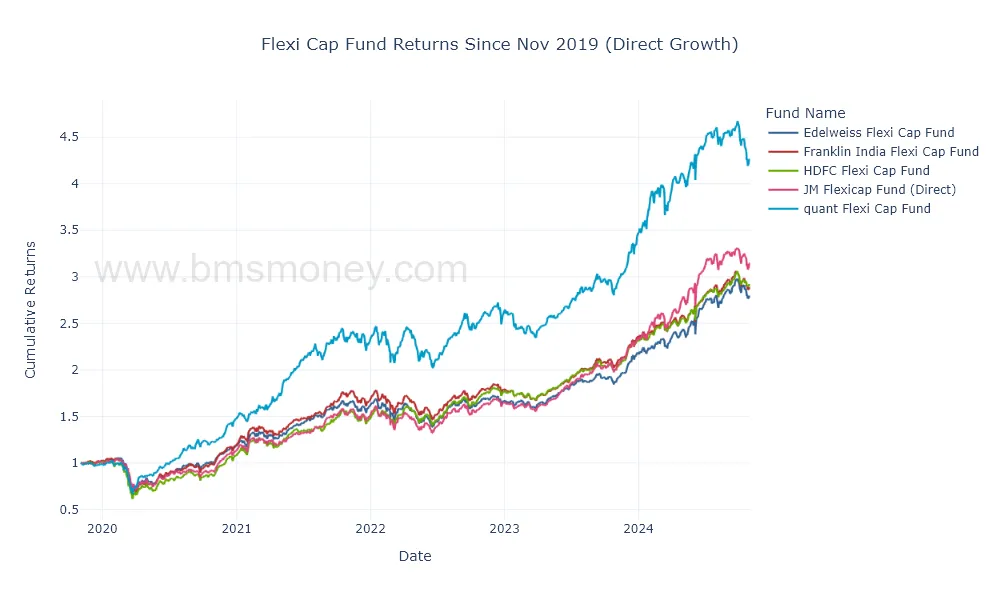| Fund Name |
|---|
| quant flexi cap fund |
| JM Flexicap Fund |
| HDFC Flexi Cap Fund |
| Franklin India Flexi Cap Fund |
| Edelweiss Flexi Cap Fund |
| HSBC Flexi Cap Fund |

Top 10 small cap mutual funds based on 5 years SIP return.
| Fund Name |
|---|
| Quant Small Cap Fund |
| Nippon India Small Cap Fund |
| Tata Small Cap Fund |
| Bank of India Small Cap Fund |
| Invesco India Smallcap Fund |
| Edelweiss Small Cap Fund |
| Franklin India Smaller Companies Fund |
| Canara Robeco Small Cap Fund |

- Hurst exponent measures market behavior: trending, mean-reverting, or random.
- H > 0.5 indicates trending, suggesting continuation.
- H < 0.5 signals mean reversion, suggesting reversal.
- H = 0.5 implies randomness, resembling an efficient market.
- Useful for trend-following, mean-reversion strategies, and portfolio diversification.